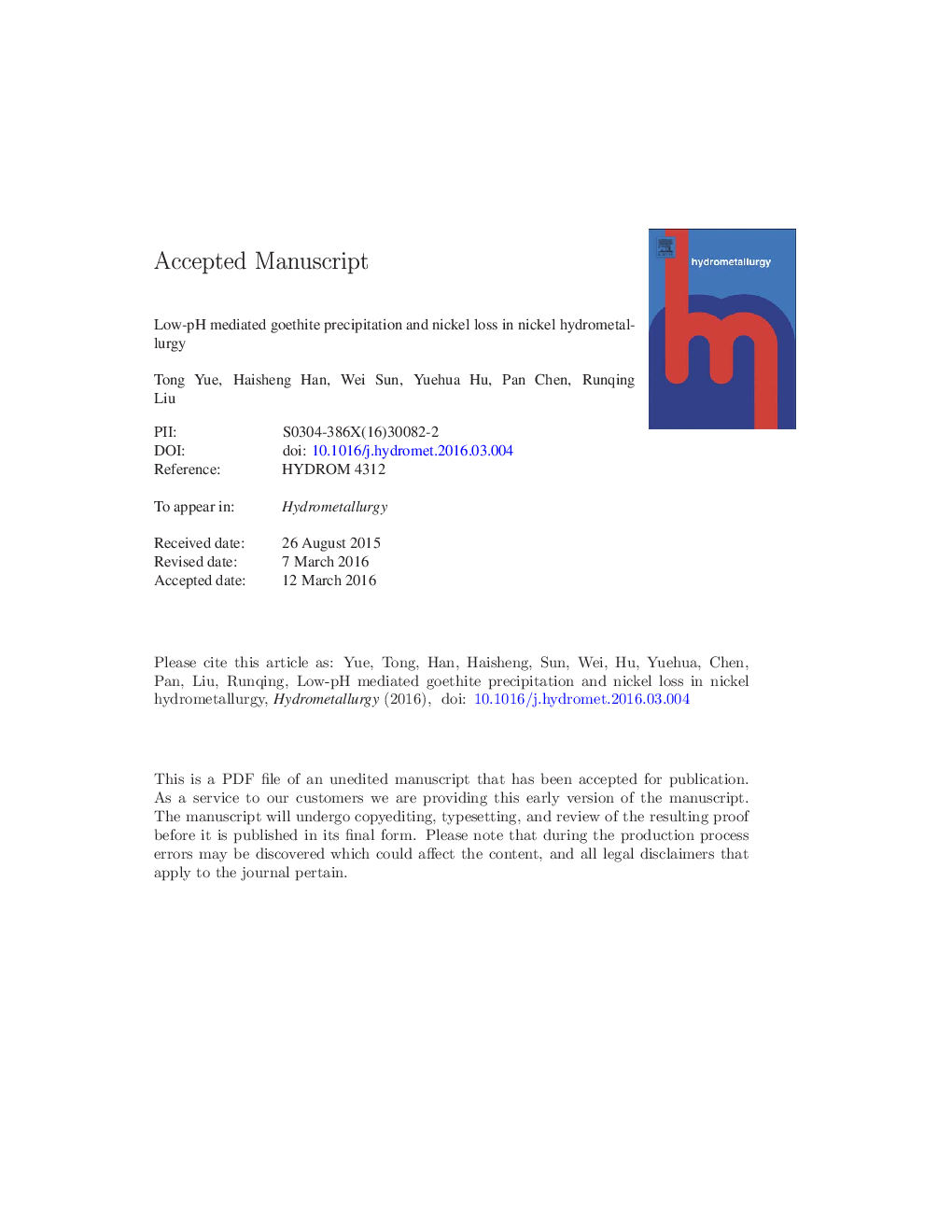| Article ID | Journal | Published Year | Pages | File Type |
|---|---|---|---|---|
| 4769101 | Hydrometallurgy | 2016 | 19 Pages |
Abstract
The goethite process was conducted in nickel hydrometallurgy to examine the effects of pH levels (2.0-4.3) on the performance of iron removal and associated rate of nickel loss. The goethite precipitate was characterized by its crystallinity, particle size and microtopography using X-ray diffraction, laser particle size analyzer and scanning electron microscopy. Nickel adsorption was analyzed to study the nickel loss adsorbed on the goethite surface, and energy dispersive spectroscopy was used to detect the nickel distribution on the surface and interior of the goethite particles. Results show that as the pH decreases, the crystallinity of goethite lessens, goethite particles tend to agglomerate, the particle size increases significantly, and the filterability of the precipitate improves. Nickel is lost in iron precipitates by incorporation into the lattices and adsorption on the surface of the goethite particles. The nickel loss to the goethite lattices increases sharply with pH, and the nickel adsorption loss could be determined by the specific surface area of the goethite particles. This study demonstrates that a lower reaction pH causes the particle size of the precipitate to increase, improves the filterability, and results in a lower loss of nickel.
Related Topics
Physical Sciences and Engineering
Chemical Engineering
Chemical Engineering (General)
Authors
Tong Yue, Haisheng Han, Wei Sun, Yuehua Hu, Pan Chen, Runqing Liu,
